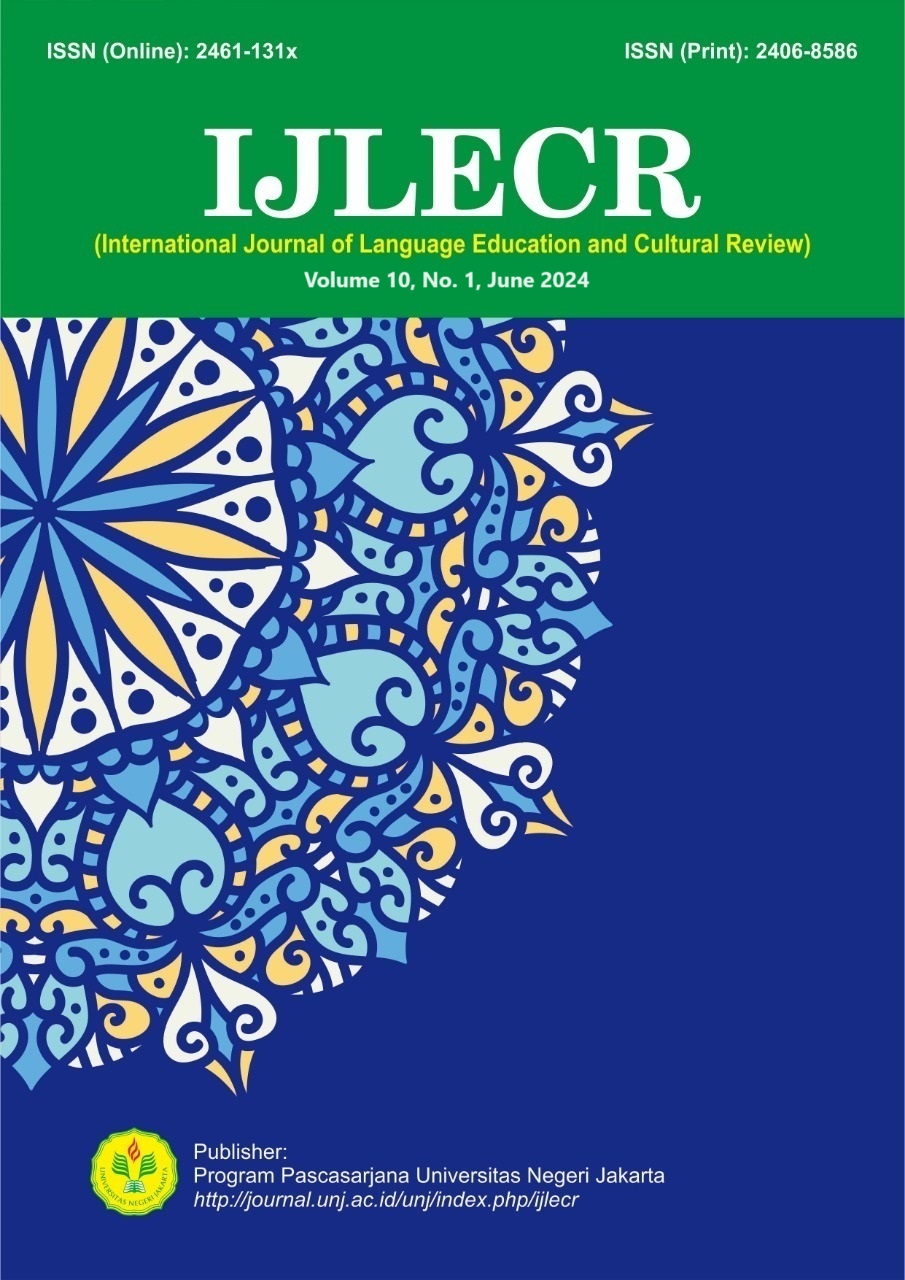Masculinity of Arthur Dismmesdale in the Novel the Scarlet Letter by Nathaniel Hawthrone
DOI:
https://doi.org/10.21009/ijlecr.v10i1.44020Keywords:
Masculinity, The Scarlet Letter Novel, Arthur DismmesdaleAbstract
Finding masculinity in a character represented in a novel enables to investigate more to understand social behavior as social issue in personal or in a certain community. This study aims to find the masculinity in the character of Arthur Dismmesdale, a puritan priest in the novel of the scarlet letter that attract the writer to identify the uncommon manner of a male character. His character also viewed as one of influencing character who undergo social and psychological traits into the story which led the other main character took the blame on his behalf. This study was researched descriptively by reducing data and data grouping based on the problem studied. Data were taken from words and sentenced in the novel then describe and explain of character’s personality using Sigmund Freud Psychoanalysis that is id, ego and analyzing Masculinity. Arthur Dimmesdale, A concealed sinner, has a very complicit nature in masculinity, this is due to his inability to be a responsible towards his evil deeds. The character was indicated as dynamic character, He cursed himself for his silence and cowardice yet changed structurally during the story and complexed the whole story.
References
Amonyeze, C. M., Nwafor, C. E., & Agbo, J. E. (2022). Ornamentalization of masculinity in Nigerian cinema: A study of Nollywood films. Journal of African Cinemas, 14(1), 1-16. https://doi.org/10.1080/23311983.2023.2166110
Beynon, J. (2002). Masculinities and cultures. Philadellphia: Open University Press.
Connell, R. (1995). Masculinities. Cambridge: Polity Press.
Connell, R. (2016). Masculinities in global perspective: Hegemony, contestation, and changing structures of power. Theory and Society, 45(4), 303–318. https://doi.org/10.1007/s11186-016-9275-x
Connell, R. (2019). The good university: What universities actually do and why it’s time for radical change. Zed Books. https://www.bloomsbury.com/uk/good-university-9781350359833/
Connell, R., & Messerschmidt, J. (2005). Hegemonic masculinity: Rethinking the concept. Gender & Society, 19(6), 829–859. https://doi.org/10.1177/ 0891243205278639
Connell. R. (2005). Masculinities. Los Angeles: University of California Press.
Ferrante, J. (2008). Sociology: A global perspective. Belmont, CA: Thomson/Wedsworth.
Freud, S. (1939). The psychology book big ideas simply explained. London: DK Books.
Gay, L.R. (1992). Educational research. New York: Maxwell Macmillan International.
Gómez, R. (2007). Masculinity in uncle Tom’s Cabin. American Quarterly, 47(4), 595- 618. https://doi.org/10.2307/2713368
H., K. L. (2021). Strong hero or violent playboy? Portrayals of masculinity in children’s animated movies. Sex Roles, 85(3-4), 677-687. https://doi.org/10.1007/s11199-021- 01247-0
Hawthrone, N. (1988). The scarlet letter. New York, N.Y, U.S.A: Signet Classic.
Hoffman, L. (1992). A reflexive stance for family therapy, therapy as social construction. Newbury Park, CA: Sage.
Holman, H. & Harmon. (1986). A handbook to literature. London: Macmilan General Reference.
Horton, L. (2022). Men of money: Elite masculinities and the neoliberal project. Rowman & Littlefield Publishers. https://books.google.com.au/ books?id=qK2-Zqeacaaj
Subrayan, A. (2016). Complicity to hegemonic masculinity. Malaysia: University of Putra Malysia.
Sumardjo, Y. (1998). Apresiasi kesusastraan. Jakarta: Grammedia.
Taylor, S.E. (1981). Social cognition bases of social information processing. Hillsdale: Erlbaum.
Wellek, R. & Warren, A. (1948). Theory of literature. USA: Harcourt, Brace, and Company.
Wojnicka, K. (2021). Conceptualizing complicit masculinities. Sweden: University of Gothenburg.
Zhang, S. (2020). Psychoanalysis: The influence of Freud’s theory in personality psychology. Proceedings of the International Conference on Mental Health and Humanities Education (ICMHHE 2020). https://www.atlantis-press.com/proceedings/icmhhe-20/125939185








